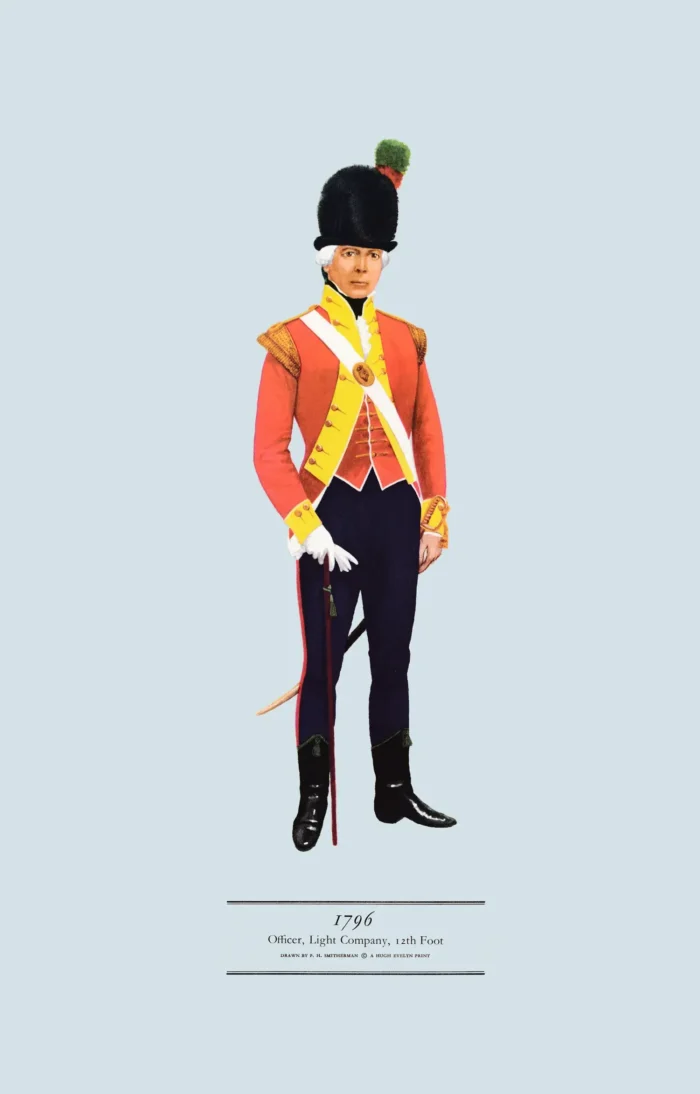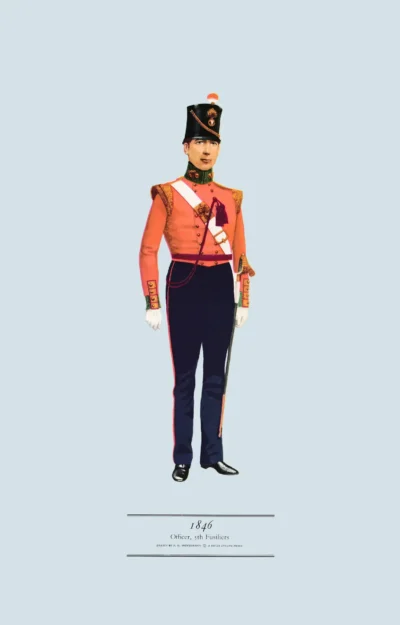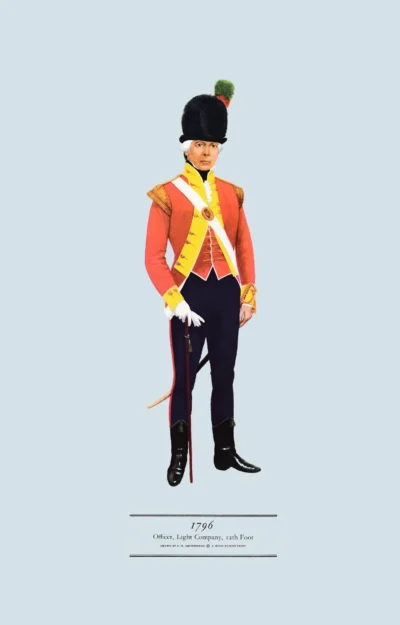Officer, Light Company, 12th Foot, 1796 (Suffolk Regiment)
Original price was: £15.00.£10.00Current price is: £10.00.
The Suffolk Regiment merged with the Royal Norfolk Regiment in 1959 before being amalgamated into the Royal Anglian Regiment in 1964 (scroll down for a more detailed Description)
Published 1966 by © Hugh Evelyn Limited; drawn by Colonel Philip Henry Smitherman (1910-1982), Royal Corps of Signals
Size: c. 24.5 x 37.5 cm [9 ½ ″ x 14 ½ ″] (may vary slightly from printers’ cut 50 years ago)
Printed on on medium cardstock weighing 144 g/sm2 faced in light greyish blue (RGB c. d4e1e8)
Print is STANDARD size – shipping is the same for 1 to 10 prints (based on largest print size in your order) – see Shipping & Returns.
In stock
Description
The regiment was raised by Henry Howard, 7th Duke of Norfolk as the Duke of Norfolk’s Regiment of Foot in 1685 and incorporated men from the East Anglian counties of Norfolk and Suffolk. It saw service for three centuries, participating in many wars and conflicts, including the First and Second World Wars. From the first the regiment had an association with the county of Suffolk, and in 1881 it became the Suffolk Regiment before being amalgamated with the Royal Norfolk Regiment in 1959. In 1964 it was amalgamated again to form the Royal Anglian Regiment which is one of the 4 regiments of the Queen’s Division. 12th Foot were placed on the regular establishment by James II in 1685, formed from the garrison companies of Windsor Castle which had been in existence since 1661. They therefore trace their history back to the formation of the Regular Army. They were present at the battle of Minden and were obliged to march into action through a rose garden from which the men picked red and yellow roses which they stuck in their hats. On the first day of August every year, the anniversary of the battle, the men of the regiment wore red and yellow roses in their hats. The badge of the regiment, the castle and key, and its motto, ‘Montis Insignia Calpe’, were granted for the gallant part it played in the siege of Gibraltar, 1779 to 1783. This light company uniform shows the wings on the shoulders instead of epaulettes, and a red waistcoat instead of white worn by the rest of the regiment. His hat, a ‘topper’ with a bearskin crest, was popular for a few years and worn by light companies of many regiments. His coat tails are short. This outfit is intended for active, aggressive men the light company men needed.
Source: A letter from an officer of the Light Company, quoted in the Regimental History, giving a minute description of his uniform, giving a minute description of his uniform.
Additional information
| Weight | 0.0131 kg |
|---|---|
| Dimensions | 23 × 37 cm |





